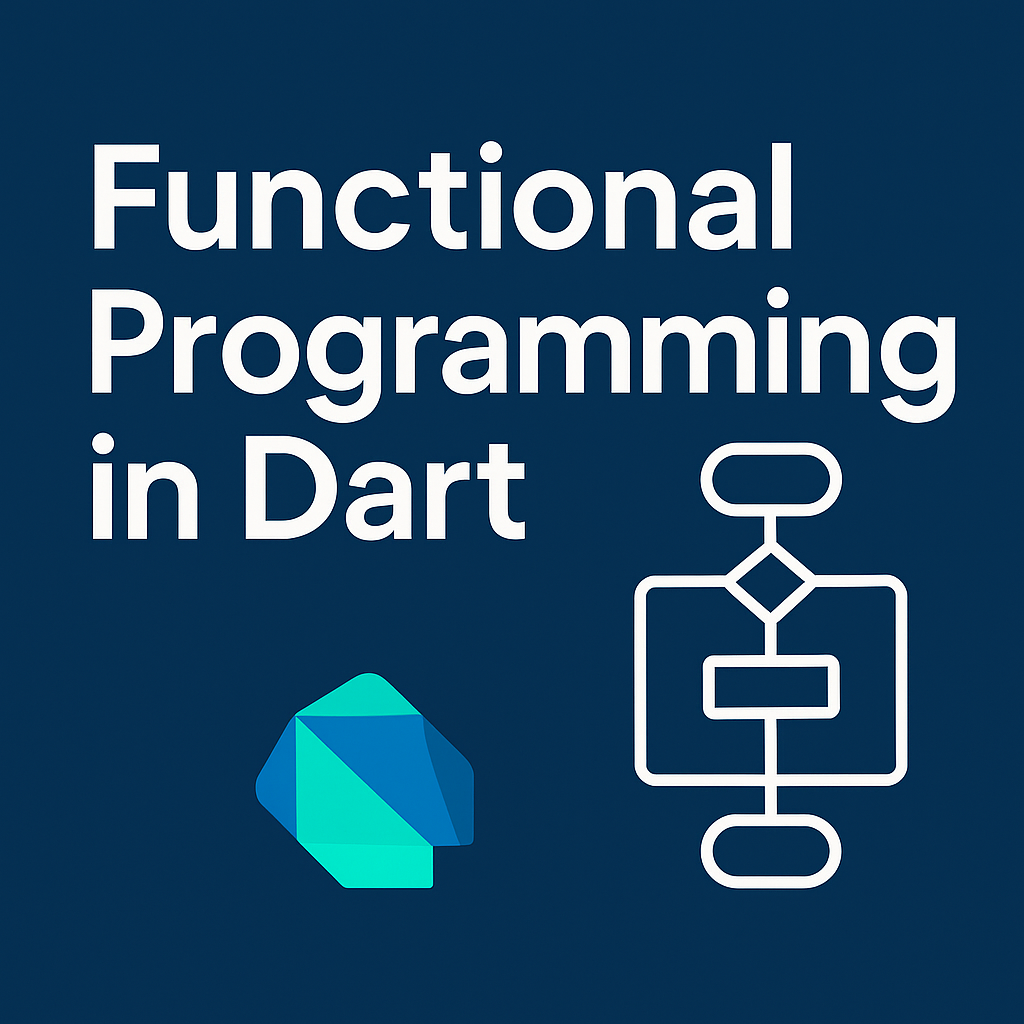Functional Programming in Dart: Concepts, Use Cases, and Future Scope
Introduction
Dart is an object-oriented language at its core, but it provides powerful support for functional programming (FP). With features like first-class functions, anonymous functions, collection transformations, and immutability tools, Dart allows developers to write cleaner, more predictable, and reusable code.
In this article, we’ll explore:
- What functional programming means
- Key FP principles in Dart
- Real-life examples in Flutter
- When to choose FP vs OOP
- Future of FP in Dart ecosystem
What is Functional Programming?
Functional programming is a programming paradigm where functions are treated as first-class citizens, and side-effects are minimized.
Key Principles:
- Pure Functions: Output depends only on input, no side-effects
- Immutability: No state mutation
- First-class Functions: Functions can be passed, returned, or assigned
- Higher-order Functions: Functions that take or return other functions
- Declarative Style: Focus on what to do, not how
Read article: How to Use Isolates for CPU-Intensive Tasks in Dart?
Functional Programming Constructs in Dart
1. First-Class Functions
int add(int a, int b) => a + b;
Function operation = add;
print(operation(5, 2)); // 7
2. Anonymous & Arrow Functions
var square = (int x) => x * x;
print(square(4)); // 16
3. Higher-Order Functions
List<int> transform(List<int> list, int Function(int) f) {
return list.map(f).toList();
}
print(transform([1, 2, 3], (x) => x * 2)); // [2, 4, 6]
4. map, filter, reduce
var nums = [1, 2, 3, 4, 5];
var squared = nums.map((x) => x * x);
var even = nums.where((x) => x % 2 == 0);
var total = nums.reduce((a, b) => a + b);
5. Immutability (with final, const, and packages)
dartCopyEditfinal list = List.unmodifiable([1, 2, 3]);
Real-Life Use Cases of FP in Dart/Flutter
1. State Management (Flutter Riverpod, Bloc, etc.)
FP promotes pure reducers and unidirectional data flow. Libraries like:
flutter_riverpodflutter_bloc
final counterProvider = StateProvider<int>((ref) => 0);
2. Data Transformation in UI
var activeUsers = users.where((u) => u.isActive).map((u) => u.name).toList();
3. Building Reusable UI with Function Parameters
Widget actionButton(String label, VoidCallback onTap) {
return ElevatedButton(onPressed: onTap, child: Text(label));
}
4. Form Validation with Function Composition
String? validate(String value) {
return value.isEmpty ? 'Required' : null;
}
Benefits of Using FP in Dart
| Benefit | Description |
|---|---|
| Reusability | Smaller, composable functions |
| Testability | Pure functions are easy to test |
| Predictability | Less side-effect, less debugging |
| Structure | Encourages modular architecture |
FP vs OOP in Dart: When to Use What?
| FP | OOP |
|---|---|
| Transforming collections | Modeling real-world entities |
| Stateless utilities | Stateful services or objects |
| Functional UIs | Stateful widgets with lifecycle |
Combine both: FP for logic, OOP for structure.
Future Scope: FP in Dart
- More Dart devs are using Riverpod and freezed, which are FP-inspired.
- Tools like
sealed_unions,fpdart, anddartzbring true FP into Dart. - Dart’s upcoming meta-programming and pattern matching features support FP patterns deeply.
- AI-driven code generation tools are shifting toward pure, stateless components — a natural match for FP.
FAQs – Functional Programming in Dart
Not fully. Dart is hybrid — supports FP style, but not a pure FP language.
No, they’re optimized. Just avoid deep nesting in rebuild-sensitive areas.
fpdart or dartz in production? Yes. fpdart is modern, null-safe, and highly expressive for FP lovers.
Absolutely. Stateless UIs, hooks, declarative styles — all borrow from FP.


